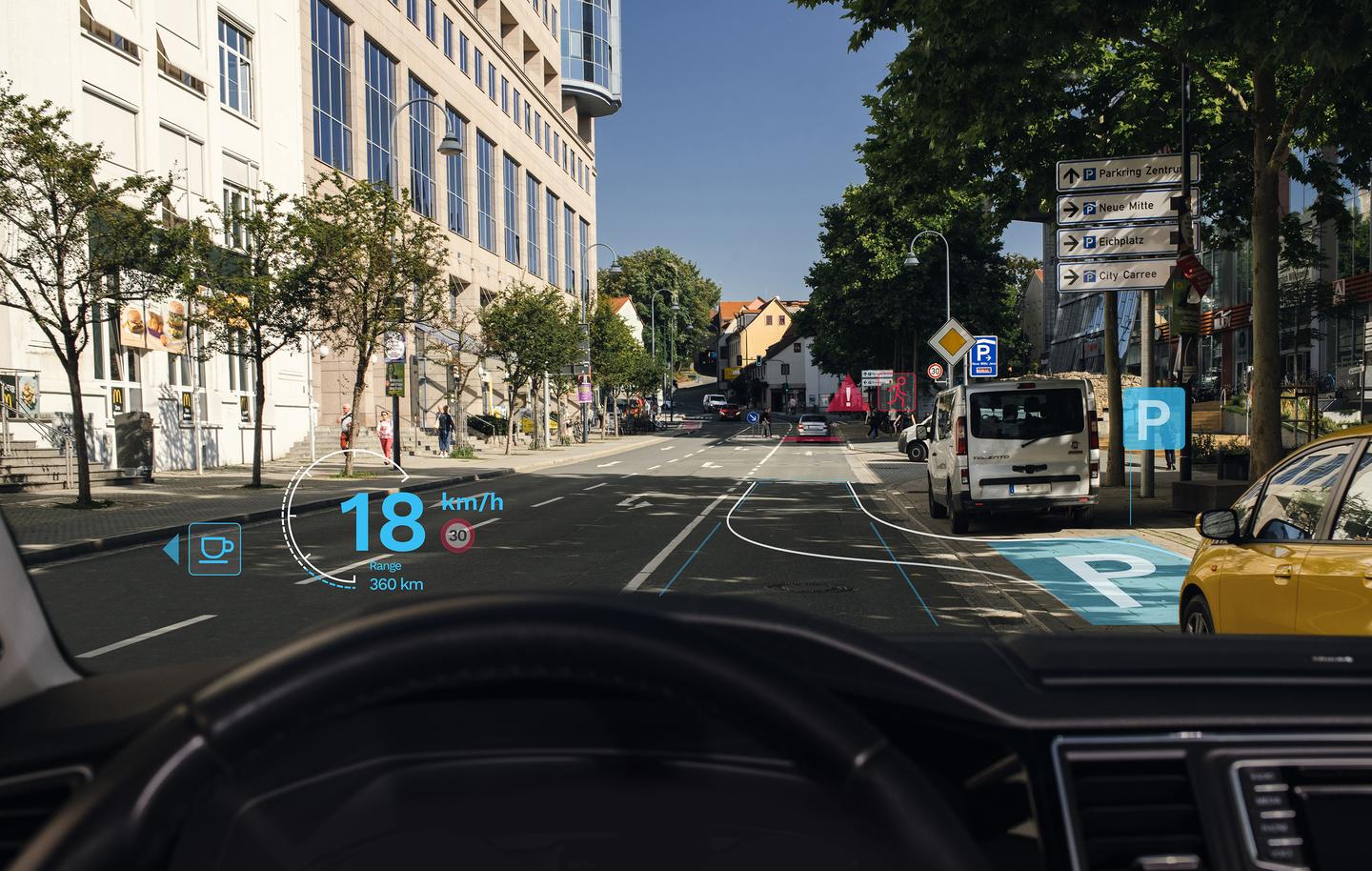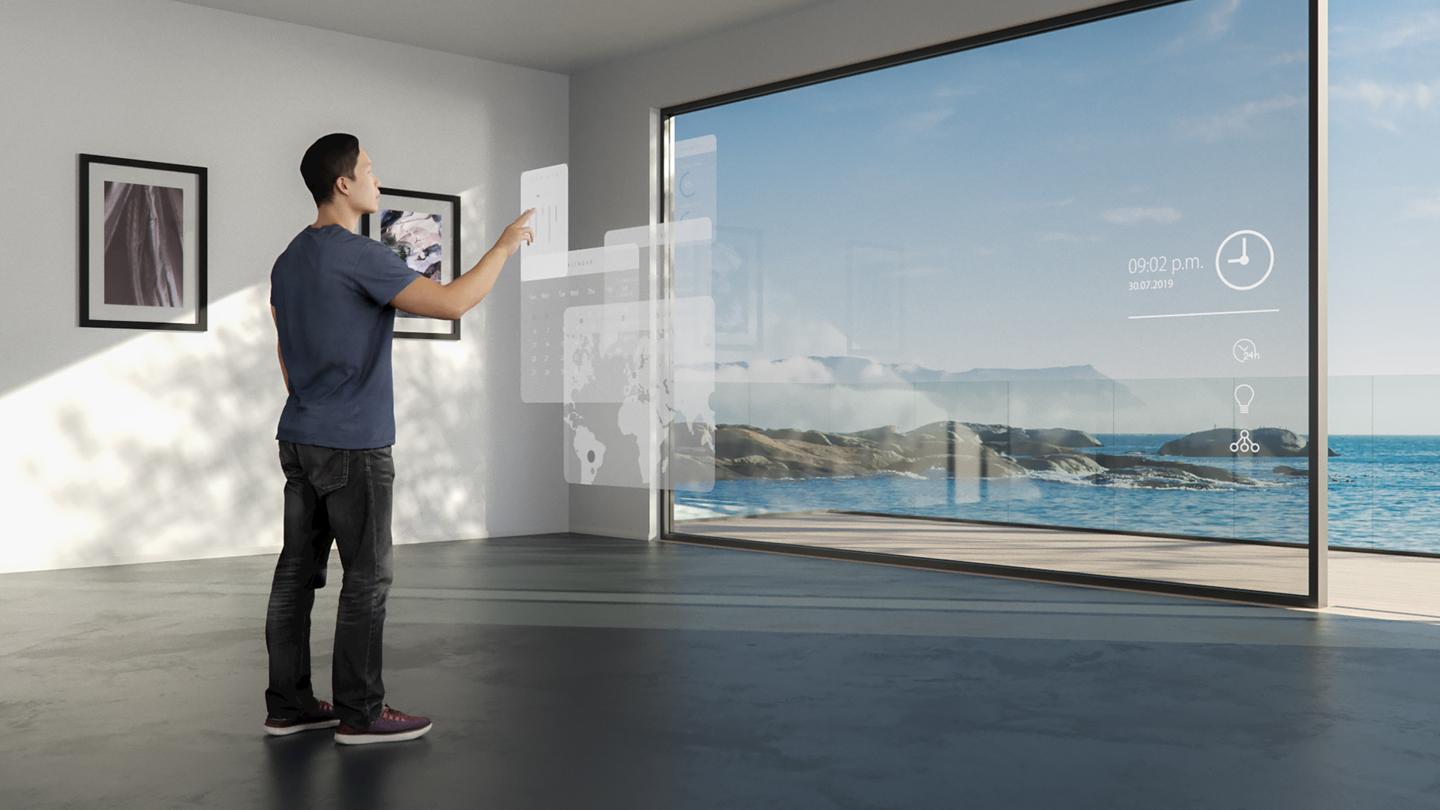German optics titan Zeiss is heading to CES next week to show off its Multifunctional Smart Glass technology, which can float “holographic” and augmented-reality content on a transparent surface for such things as head-up displays in cars, 3D control elements in smart homes, and even a transparent videocam in the middle of a glass panel.
Zeiss first announced the development in early 2019, and it had matured enough by last year for use in augmented-reality head-up displays (HUD) in aircraft cockpits. The company revealed plans to move into automotive applications at IAA Mobility 2023, and is now pushing for mass production in what VP Roman Kleindienst is calling a “Gutenberg moment for holography.”
The technology is built around a thin polymer film that can “turn any glass surface (windows of buildings, transparent screens, side windows of vehicles) into an on-demand screen for communications.” The company says that the film offers more than 92 percent transparency, features “ultra-high-precision optics,” and combines projection, detection, illumination and filtering functionality.

Zeiss
Continuing the IAA Mobility conversation, the technology being presented in Nevada next week will include augmented-reality HUDs for car drivers. This could mean that, as well as putting key dashboard and navigation information in a driver’s field of view, the Smart Glass may well extend content display (including videos) to side and rear windows – for hosting Car2X communications, or blacking out window glass, or making “projected text and images visible only from the inside or outside.” Zeiss also points to “new levels of design freedom” being opened up for “holographic” brake lighting.
Arguably the most interesting application is the so-called holocam, which employs “coupling, decoupling and light guiding elements to divert incident light to a concealed sensor.”
This would effectively negate the need for punch holes or notches to accommodate the camera and sensor, and could even mean that videocams are positioned in the middle of a display with “only a minimal effect on the brilliance of the image reproduction” – though the IAA Mobility demo example did appear limited to monochrome. Zeiss also indicates that the setup can be expanded to gather environmental data, such as air pollution and UV exposure, too.

Zeiss
Other possibilities include floating switches where gestures or voice commands activate holographic control elements on an otherwise flat surface in a vehicle or smart home. Window panes could serve as adjustable ambient lighting, and the micro-optical layer in glass surfaces could harvest sunlight and channel it to a hidden solar cell to produce energy.
However, Zeiss is not looking to market finished products itself but act as a system provider to OEMs, offering “unique industrial-scale replication of holograms in the form of a transparent layer to manufacturers or suppliers who wish to enhance their products and provide them with new functions.” Such industrial solutions will be presented at the company’s booth in the Las Vegas Convention Center West Hall at CES 2024, which opens its doors to the public on January 9.
Source: Zeiss
Source of Article
